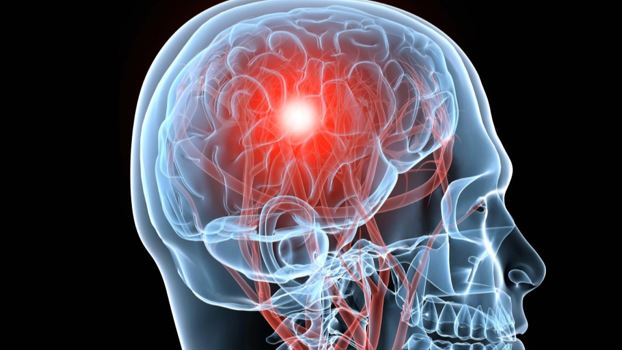
Unfair dismissal cases can be very complex, because it is difficult to determine whether the unfair dismissal actually took place. Our wrongful termination lawyer has the experience necessary to handle your case with ease. We can help you file your unfair dismissal claim and litigate if necessary. We will work hard on your case to find the best financial compensation based on your situation. If you or a loved one has been unfairly fired from your job, for any of the reasons described above, please feel free to contact us we also have a team of expert lawyers in many other cases such as car accident, personal injury, death lawyers etc.
Are there different levels of concussion? There are three degrees of concussion:
Grade 1: presence of some of the symptoms from the previous list without loss of consciousness and with a maximum duration of 15 minutes.
Grade 2: No loss of consciousness but symptoms last for more than 15 minutes.
Grade 3: There is loss of consciousness — even if only for a few seconds.
Knowing the different degrees of concussion is important because how soon you can safely resume sports activity after suffering a concussion depends on the degree of the latter:
In Grade 1 concussions, sports activity can be resumed as soon as symptoms subside. But you should stop playing sports if you suffer another traumatic brain injury.
When you have a grade 2 concussion, you should stop sports activity and not do any sport or physical activity that could lead to another traumatic brain injury for at least a week.
When you have a grade 3 concussion, you should see a doctor as soon as possible.
What should you do if a friend or teammate suffers a concussion? Tell an adult or coach immediately. Even if the concussion is mild, the affected person should sit and rest for the rest of the match. If the symptoms are severe (for example, having seizures or being unconscious for a long time) or seem to be getting worse, you should ask for urgent medical help.
When a doctor suspects that a patient may have a concussion, he or she will first ask about the traumatic brain injury they have suffered — how and when it occurred — and about their symptoms. The doctor may also ask you apparently silly questions, such as: “Who are you?”; “Where are you?”; “What day is today?” or “Who is the President?”
The doctor will carefully evaluate the functioning of your patient’s nervous system, including balance, coordination and reflexes. The patient may be asked to do an activity, such as running without moving from the location for a few minutes, to see how the brain works after physical exercise.
Sometimes doctors send patients who have suffered traumatic brain injuries diagnostic imaging tests, such as a computed tomography (CT) scan – a special x-ray of the brain – or an MRI (special imaging) of the brain that is not used X-rays – to rule out possible bleeding or other serious brain injuries.
If the concussion is not severe enough to require hospitalization, the doctor will instruct the patient on what to do at home, such as asking someone to wake him up at night once. If a person who has a concussion has a hard time waking up, is increasingly confused, or has other symptoms such as vomiting, it could be a more serious problem, so the doctor should be contacted again.
The doctor will probably recommend a person with a concussion to take acetaminophen or other headache medications that do not contain acetylsalicylic acid (the active substance in aspirin). He will also ask you to take your studies and work slowly.
How to identify traumatic brain injury .Traumatic brain injuries are usually emergencies and the consequences can quickly worsen without treatment. Doctors usually need to assess the situation quickly.
Glasgow Coma Scale
This 15-point test allows the doctor or other members of the emergency medical staff to assess the initial severity of a brain injury by checking the person’s ability to follow instructions, and to move the eyes and limbs. Speech coherence also provides important clues.
On the Glasgow Coma Scale, abilities are rated with a number from 3 to 15. High scores mean less serious injuries.
Information about injury and symptoms
If you saw that someone was injured or arrived immediately after they were injured, you can provide medical staff with useful information to assess the injured person’s condition.
The answers to the following questions can be used to determine the severity of the injury:
How did the injury occur?
Did the person lose consciousness?
How long were you unconscious?
Did you see any other changes in alertness, speech or coordination, or other signs of injury?
Where was the head or other body parts hit?
Can you provide information on the strength of the injury? For example, what hit your head? How far did you fall? Was the person thrown from a vehicle?
Was your body hit or shaken a lot?
Imaging tests
Computed tomography (CT) scan. This is usually the first test performed in the emergency room when traumatic brain injury is suspected. In a CT scan, a series of x-rays are used to create a detailed view of the brain. On a CT scan, you can quickly visualize fractures and discover evidence of bleeding in the brain (hemorrhage), blood clots (bruises), brain tissue with bruises (contusions), and swelling of brain tissue.
Magnetic resonance (MR). This test can be used once the person’s disorder has stabilized or if symptoms do not improve soon after injury.
Intracranial pressure control
Swelling of the tissue from a traumatic brain injury can increase the pressure inside the skull and cause further damage to the brain. Doctors can insert a tube through the skull to monitor this pressure.

 The Pros of Selling an Old Vehicle to a Cash for Car Service
The Pros of Selling an Old Vehicle to a Cash for Car Service

